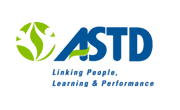 |
|
![]()
About ExpertC+Charge Prognose
Speaker Search
Latest Issue
Article Archive
Training & Meeting Resources
Subscriptions
Experts Only
Results Indicate Record Levels of Employees Receive Training
(Alexandria, Va.) March 27 - The average U.S. company is training more of
its employees than ever before, more dollars are going to technical skills
training than any other type of training, and e-learning gains momentum
among large companies, according to The 2001 ASTD State of the Industry
Report released today by the American Society for Training & Development
(ASTD).
While the average company is training record levels of employees-78.6
percent-Mark Van Buren, Director of Research for ASTD, said "It's important
to note that the top 10 percent of companies surveyed train 98.4 percent of
employees in their organizations."
"The top 10 percent of companies surveyed, or 'Training Investment Leaders'
also spent an average of $1,665 on training per eligible employee, compared
to $677 for the average survey respondent," he noted. "Training Investment
Leaders have made learning a central focus of organization-wide efforts to
stay competitive and deliver results in the New Economy."
The study's key findings also indicate a few surprises, according to Van
Buren. "The training landscape is shifting, in part because of the rapid
rate of change many firms have been experiencing," he said. "Training, like
any other financial investment, is not immune to changing times. Now, more
than ever, companies must continually demonstrate the value and worth of
their investments in training."
Additional key findings of the study include the following:
* Overall training expenditures in 1999 fell to 1.8 percent of
payroll, down from 2.0 percent in 1998.
"We've seen the growth rate in training expenditures slow gradually
over the past few years,"
said Van Buren. "The latest figures suggest that training was
affected by general 'belt-tightening' or cost-cutting in some companies
during 1999," he noted. Projections for 2000 indicate that the decline may
be momentary, as more than 70 percent of survey respondents expect overall
training expenditures to increase between 1999 and 2000.
* The largest share of spending on training went to training in
technical processes and procedures (13 percent), with professional skills
following close behind (11 percent). Interpersonal communication, new
employee orientation, and IT skills followed at 9 percent each.
"Our results show that for the first time, spending on professional
skills has surpassed both IT skills and managerial/supervisory skills
training," Van Buren said.
* The use of e-learning has leveled off over the past two years in
smaller companies, with the average firm in 1999 delivering 8.4 percent of
its training using e-learning, compared to the 1998 figure of 8.5 percent.
However, large companies exhibited the opposite trend in e-learning.
Among companies in the ASTD Benchmarking Forum, which average more than
55,000 employees, the percent of training time delivered via e-learning grew
from 12.3 percent in 1998 to 13.8 percent in 1999. "After examining the data
from both large and small companies, it appears that large companies are
making the greatest strides using present forms of e-learning. With more
employees, they can reap the savings in distribution costs and travel
expenses due to economies of scale," said Van Buren.
* Results indicate a slight increase in classroom training, up to 79.9
percent in 1999 from 78.4 percent in 1998.
"We believe the growth in classroom training and a leveling off in
e-learning may be an indication that companies are trying more of a blended
approach, or a combination of e-learning and classroom training," Van Buren
said.
* Outsourcing expenditures are down as firms bring more of the
training function "in house" with the aim of reducing costs while providing
more individualized and specialized learning.
The report's findings provide strong evidence of this trend, as
firms spent a decreasing percentage on payments to outside companies (19.9
percent in 1999 versus 24.4 percent in 1998), and an increasing amount on
wages and salaries for training staff (50 percent in 1999 versus 45.6
percent in 1998).
The 2001 ASTD State of the Industry Report is available for purchase by
calling the ASTD Customer Care Center at 703.683.8100. The report costs
$39.95/$54.95 (ASTD members/non-members). Use product code 190101 when
ordering.
Founded in 1944, ASTD is the world's premiere professional association in
the field of workplace learning and performance. ASTD's membership includes
more than 70,000 professionals in organizations from every level of the
field of workplace learning and performance in more than 100 countries. Its
leadership and members work in more than 15,000 multinational corporations,
small and medium sized businesses, government agencies, colleges, and
universities. For more information, visit www.astd.org.
